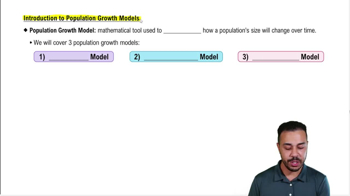Pose a hypothesis to explain why the evolution of the wing was such an important event in the evolution of insects.
The pygmy zebra octopus is a potential new model organism for understanding brain function in humans despite the independent evolution of high intelligence in both groups. Describe (or draw a phylogenetic tree to show) the relationships among humans (H. sapiens), the pygmy zebra octopus (O. chierchiae) and two other protostome model organisms in medicine: the fruitfly (D. melanogaster) and roundworm (C. elegans).
 Verified step by step guidance
Verified step by step guidanceKey Concepts
Phylogenetic Tree

Protostomes

Model Organisms

Which of these choices is an example of homology (similarity due to common ancestry)? a. suspension feeding in sponges and clams b. ectoparasite lifestyle in aphids and ticks c. cnidocytes (stinging cells) in jellyfish and sea anemones d. radial symmetry in cnidarians and echinoderms
Suppose that a gene originally identified in nematodes (roundworms) is found to be homologous with a gene that can cause developmental abnormalities in humans. Would it be possible to use fruit flies as a model organism to study this gene? Explain.
A team of 102 scientists spent a year surveying a small area of the San Lorenzo rain forest in Panama to count the number of species of arthropods living there. After collecting 129,494 specimens—using nets, traps, shovels, tree-climbing harnesses, helium balloons, and other creative gear—it took the team eight years to sort and identify the arthropods. Which of the following nested groups best describes the taxonomic context for the San Lorenzo project? a. Animalia > Bilateria > Arthropoda > Ecdysozoa b. Protostomia > Lophotrochozoa > Ecdysozoa7 Arthropoda c. Arthropoda > Protostomia > Ecdysozoa > Bilateria d. Bilateria > Protostomia > Ecdysozoa > Arthropoda
